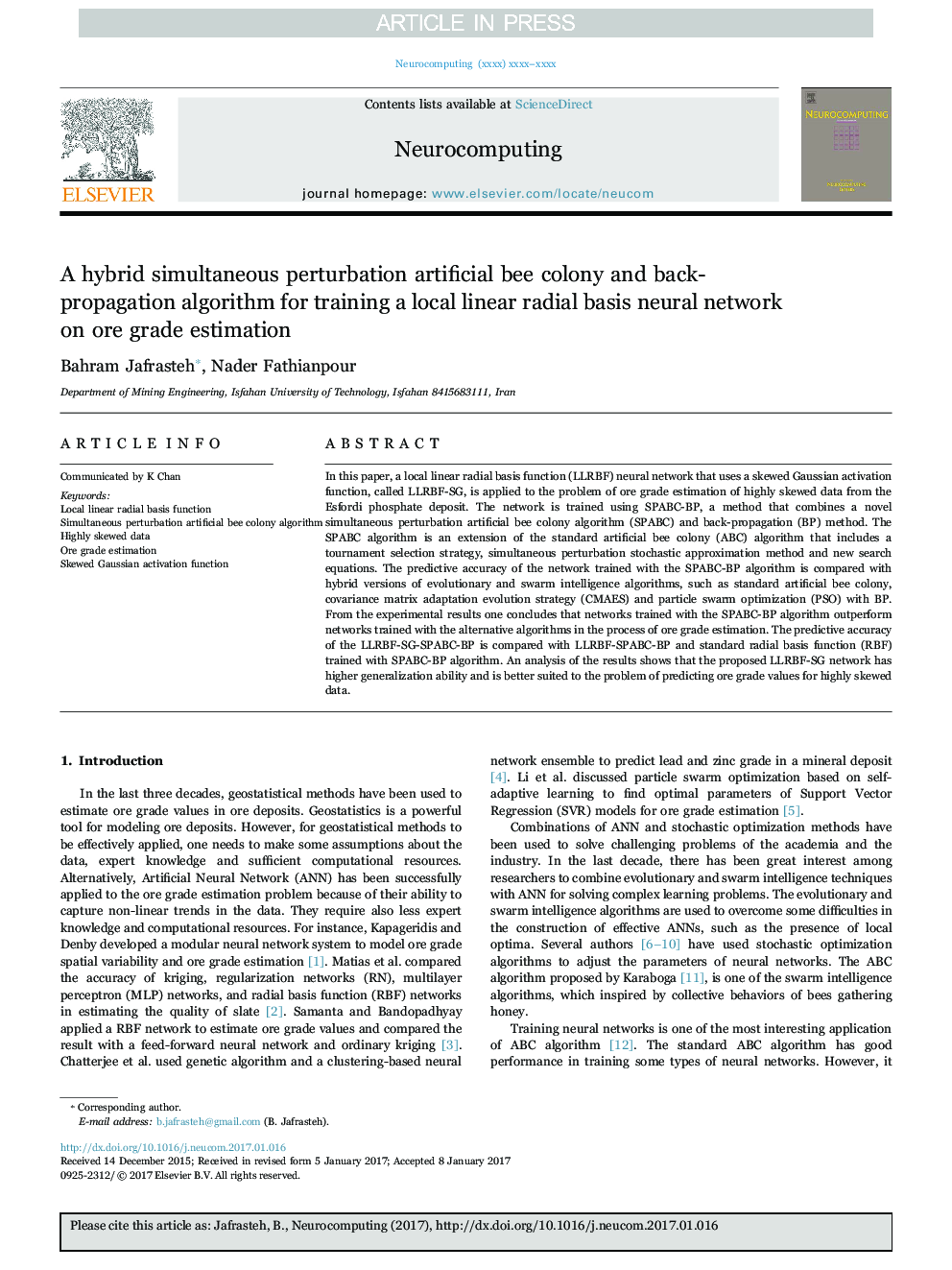| کد مقاله | کد نشریه | سال انتشار | مقاله انگلیسی | نسخه تمام متن |
|---|---|---|---|---|
| 4947859 | 1439592 | 2017 | 11 صفحه PDF | دانلود رایگان |
عنوان انگلیسی مقاله ISI
A hybrid simultaneous perturbation artificial bee colony and back-propagation algorithm for training a local linear radial basis neural network on ore grade estimation
ترجمه فارسی عنوان
الگوریتم هلی کوپتر هلیم مصنوعی زنبور عسل ترکیبی و الگوریتم تکثیر برگشتی برای آموزش یک شبکه عصبی مبتنی بر شعاعی محلی بر اساس برآورد درجه سنگ معدن
دانلود مقاله + سفارش ترجمه
دانلود مقاله ISI انگلیسی
رایگان برای ایرانیان
موضوعات مرتبط
مهندسی و علوم پایه
مهندسی کامپیوتر
هوش مصنوعی
چکیده انگلیسی
In this paper, a local linear radial basis function (LLRBF) neural network that uses a skewed Gaussian activation function, called LLRBF-SG, is applied to the problem of ore grade estimation of highly skewed data from the Esfordi phosphate deposit. The network is trained using SPABC-BP, a method that combines a novel simultaneous perturbation artificial bee colony algorithm (SPABC) and back-propagation (BP) method. The SPABC algorithm is an extension of the standard artificial bee colony (ABC) algorithm that includes a tournament selection strategy, simultaneous perturbation stochastic approximation method and new search equations. The predictive accuracy of the network trained with the SPABC-BP algorithm is compared with hybrid versions of evolutionary and swarm intelligence algorithms, such as standard artificial bee colony, covariance matrix adaptation evolution strategy (CMAES) and particle swarm optimization (PSO) with BP. From the experimental results one concludes that networks trained with the SPABC-BP algorithm outperform networks trained with the alternative algorithms in the process of ore grade estimation. The predictive accuracy of the LLRBF-SG-SPABC-BP is compared with LLRBF-SPABC-BP and standard radial basis function (RBF) trained with SPABC-BP algorithm. An analysis of the results shows that the proposed LLRBF-SG network has higher generalization ability and is better suited to the problem of predicting ore grade values for highly skewed data.
ناشر
Database: Elsevier - ScienceDirect (ساینس دایرکت)
Journal: Neurocomputing - Volume 235, 26 April 2017, Pages 217-227
Journal: Neurocomputing - Volume 235, 26 April 2017, Pages 217-227
نویسندگان
Bahram Jafrasteh, Nader Fathianpour,
